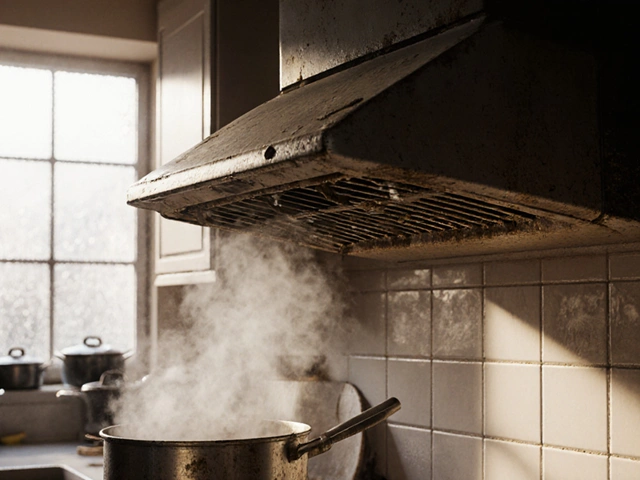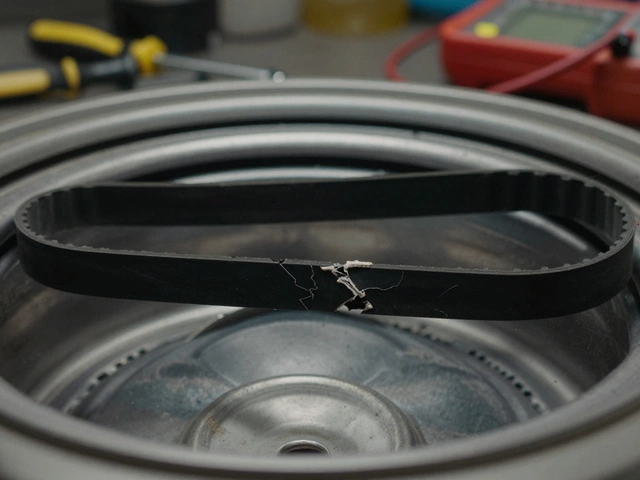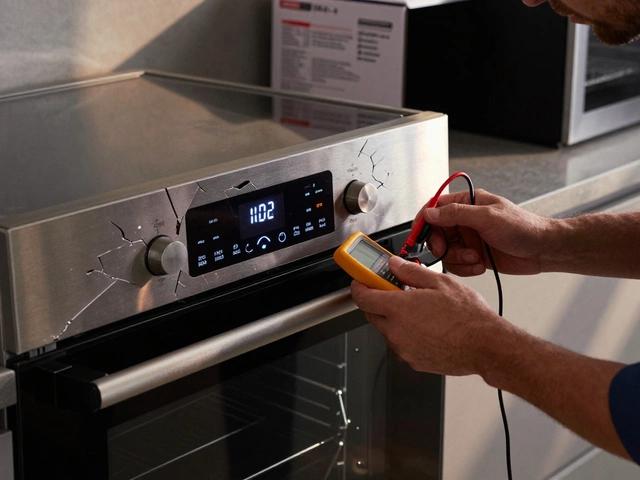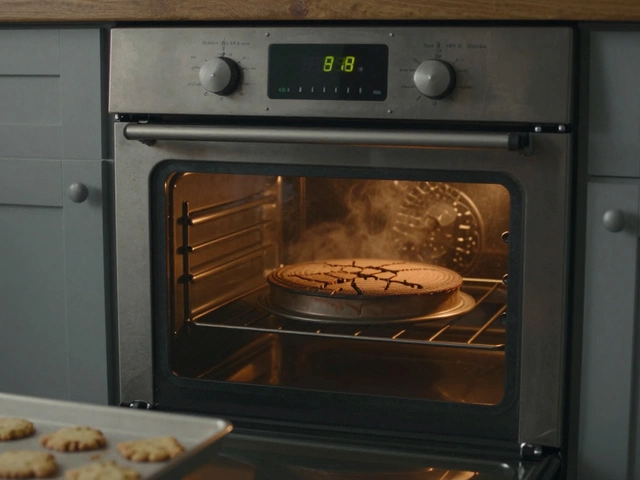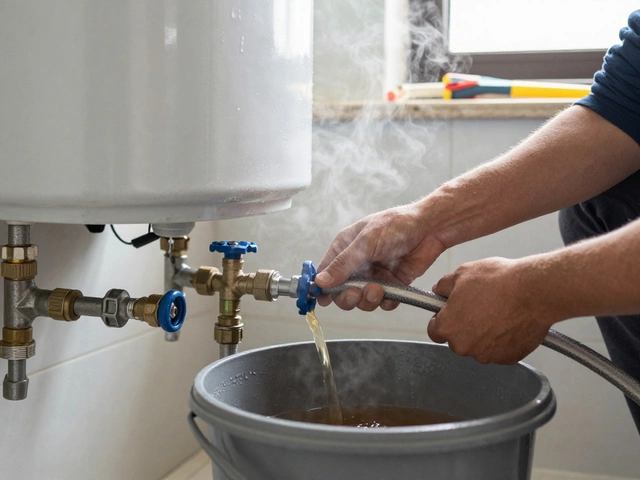Keeping your kitchen fresh and free from lingering cooking smoke or aromas can depend heavily on the trusty kitchen extractor fan above the stove. As an unsung hero of the household, this device quietly whisks away grease, smoke, and odors, making the cooking environment pleasant and safe. But what happens when it starts acting up?
Before you rush off to get a replacement, it's worth considering whether a repair might be just what your extractor fan needs. There's a good chance some basic troubleshooting and maintenance can bring it back to life. Let’s dig into the issues that commonly plague these fans and explore which of them you might tackle on your own, and when it’s best to leave things to the pros.
- Understanding Extractor Fans and Their Functions
- Common Problems in Kitchen Extractor Fans
- Basic Repair Techniques for Homeowners
- When to Call a Professional
- Tips for Regular Maintenance
Understanding Extractor Fans and Their Functions
The faithful kitchen extractor fan is often a silent workhorse. It’s perched above stoves or cooktops across New Zealand and the world, diligently working to clear the air. But have you ever stopped to consider what makes this device so essential? At its core, an extractor fan serves a few pivotal functions: it vents out non-essential smoke, eliminates unwanted odors, and reduces moisture levels during cooking. In terms of design, most kitchen extractor fans come in two primary forms: ducted and recirculating. Each type performs the vital role of ventilation in unique ways, adding a layer of versatility to our kitchen environments. The ducted systems channel the air outside, ideal for those who desire an efficient way to completely rid the kitchen of airborne pollutants. Recirculating fans, on the other hand, filter and clean the air before sending it back into the kitchen. This is particularly handy in modern apartments or homes where external ventilation isn't feasible.
Extractor fans work by employing a mechanical fan that draws in the air laden with cooking residues. The fans use either centrifugal or axial mechanisms to propel air. Axial fans are more common in household kitchens due to their straightforward structure and silent operation—quite relevant in a bustling household like mine where kids like Lena and Everett are bustling around. Centrifugal fans, however, offer superior power, often seen in commercial or larger kitchens in need of robust venting solutions. Interestingly, a tip from experts at the Department of Energy suggests that properly used fans can decrease energy consumption linked to air conditioning. This makes the fan an unexpectedly energy-efficient tool in our homes.
In many cases, the fan troubleshooting often involves grasping the nuances of these components and considering their positioning in relation to cooking surfaces. Clogged filters, typically found in recirculating fans, deserve extra attention, as they directly influence the air's passage and cleanliness. Just a small amount of grease build-up can drastically reduce airflow. A bi-annual cleanse of these filters often keeps a fan running smoothly. One might wonder when picking between fan types, how effective are they? According to Consumer NZ, a fan with an airflow rate of at least 500 cubic meters per hour is recommended for most household uses. Such figures emphasize the importance of picking the right fan for the task, ensuring optimal kitchen comfort.
"A well-maintained extractor can significantly improve indoor air quality and mitigate cooking-related hazards," according to Ventilation New Zealand. This simple-backed knowledge puts a spotlight on why understanding these mechanical marvels goes beyond mere ownership. They form the frontline defense against poor indoor air quality, making cooking a safer and more enjoyable experience.
From a maintenance perspective, knowledge of the ventilation system setup can assist in early detection of issues—be it through unusual noises, reduced suction power, or those increasingly pesky smells refusing to dissipate. It's about partnership, the partnership with our environment and technology, ensuring our homes remain sanctuaries, undisturbed by the chaos of daily cooking.
Common Problems in Kitchen Extractor Fans
Kitchen extractor fans, despite their durability, do face a few common issues that can vary depending on usage, environment, and the make and model of the fan. One typical problem is the buildup of grease and grime in the fan blades, which negatively affects performance. As these deposits accumulate over time, they can lead to poor airflow and force the motor to work harder than it should, potentially leading to overheating. Regular cleaning and maintenance can help mitigate this issue, ensuring the fan continues to function smoothly.
Another frequent issue is noise. A noisy kitchen fan could be indicative of several underlying problems, from worn-out bearings to loose components. It’s not only a nuisance but can also be a sign that something isn’t right internally. A misaligned or clogged duct could also contribute to the noise, and addressing this could be as simple as securing loose bolts or cleaning out the vent pathway. Listening closely to the kind of noises produced can offer clues; for instance, a rattling sound might suggest a different problem than a buzzing noise.
Electrical issues can also plague kitchen extractor fans. It might be that the fan just doesn’t turn on due to a blown fuse or tripped circuit breaker. Sometimes, the switches or capacitors can malfunction, which might require professional examination. Safety should be a priority here, and those not confident with electrical work should consider getting professional help instead of attempting a DIY fix. According to a study by the Appliance Standards Awareness Project, malfunctioning electrical parts are a leading cause of appliance repair expenditures.
"Routine checks and careful maintenance can extend the life of your kitchen extractor fan significantly," suggests Michael Grant, a seasoned home appliance expert. "It's much like maintaining a car or any other machine. The better you care for it, the longer it will serve you without major repairs."
Lastly, there's the problem of inadequate suction, which can be incredibly frustrating when cooking up a storm in the kitchen. This could be due to obstructions in the ductwork or a faulty motor, which can reduce the ability for the fan to expel air efficiently. In some cases, it's simply the result of an incompatible or low-power model being installed for the size and demands of the cooking space. Evaluating the performance against manufacturer guidelines can help diagnose the problem and point to whether an upgrade might be in order.
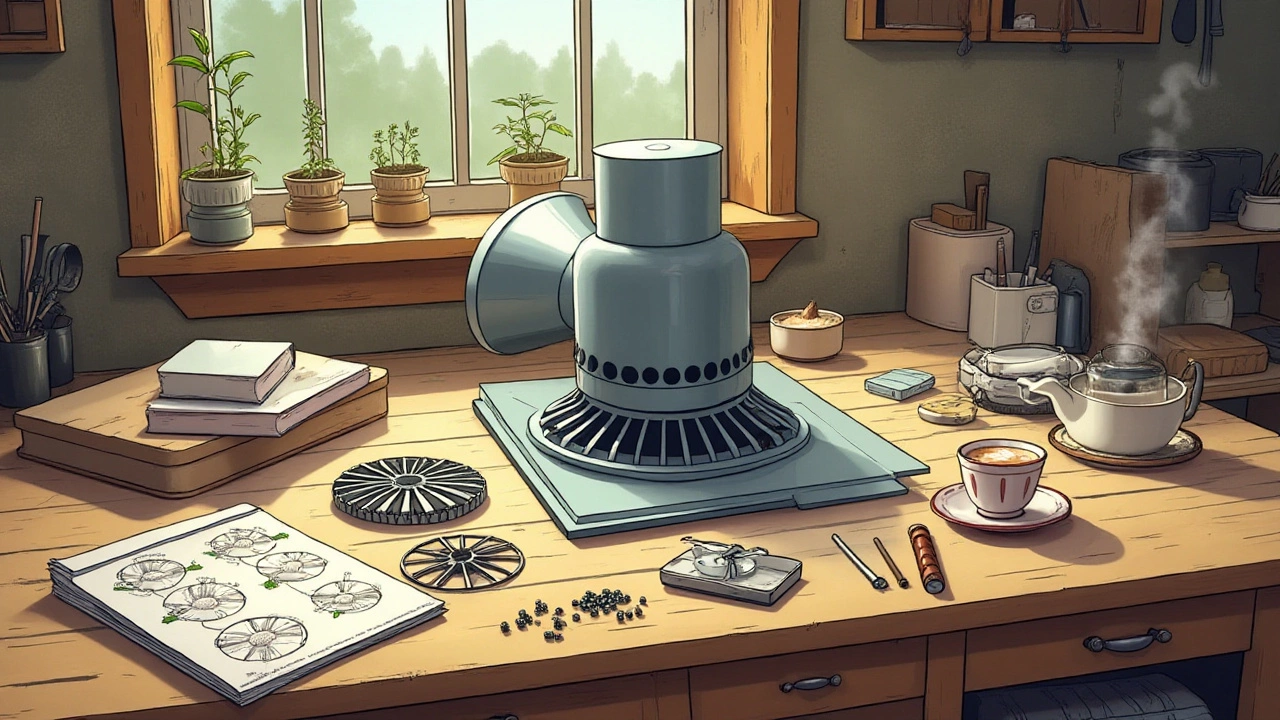
Basic Repair Techniques for Homeowners
If your kitchen extractor fan has been more silent than usual or is making ominous sounds, it might be time to roll up your sleeves. Extractor fan repair doesn’t always demand expert involvement; sometimes, a bit of DIY spirit is all you need. Let’s survey some common yet fixable issues you might encounter in your culinary haven.
First on the checklist is cleaning. An extractor fan clogged with grease and grime substantially affects performance. Begin by unplugging the fan and carefully removing the filters, typically seated firmly but effortlessly detachable. A good soak in hot, soapy water or a cycle in the dishwasher can restore them to their former glory. Once the filters are clean, cast an eye over the fan's blades, removing buildup with a gentle cloth or brush. This simple step, surprisingly often overlooked, can significantly enhance your fan’s effectiveness.
Another potential hitch could lie within the motor. If the fan hums without as much as a spin, the motor might be faulty. Before you decide to go motor shopping, open up the casing to check for any visible obstructions or loose wires. A mere loose screw might be the culprit. If the motor seems beyond salvaging but DIY tinkering piques your interest, YouTube videos are a treasure trove for tutorials on motor replacement without professional assistance.
Troubleshooting electrical issues requires a tad more caution. It's vital to confirm the fan is unplugged before diving in. Equip yourself with a standard voltage tester to check connections. If there's no power despite the setup, your circuit breaker might have tripped, or the wiring could be worn out. “Electrical expertise can save lives; if uncertain, it’s prudent to consult an electrician rather than brave it alone,” an expert once advised in a safety seminar.
Mechanical problems can also arise from a wobbly fan. Over time, vibrations might dislodge screws securing the fan to its bracket. If vibrations persist, tightening these might be your fix. Furthermore, should a rattling noise persist, delve deeper to ensure nothing within the casing has shaken loose. Washers and spacers might need a firm hand to secure them in place.
DIY Step-by-Step: Basic Fan Repair Checklist
- Disconnect Power: Safety is paramount; unplug or turn off the power at the circuit.
- Remove Grime: Clean filters and blades thoroughly to boost airflow.
- Inspect the Motor: Evaluate for blockages or loose parts.
- Check Connections: Use a voltage tester to confirm proper electrical flow.
- Secure Loose Parts: Ensure all fasteners and brackets are tight and functional.
When to Call a Professional
While attempting a do-it-yourself repair on your kitchen extractor fan might seem tempting, there are times when it's wiser to let a professional step in. One key reason to call in an expert is when you start noticing unusual noises, such as grinding or squealing, which might indicate a more serious issue within the fan motor. These sounds could be an early warning sign of components failing internally, something that requires specialized knowledge to address safely and effectively.
Another situation that warrants professional intervention is when there's an electrical fault. If your kitchen fan repeatedly blows fuses or trips the circuit breaker, it may point to wiring issues that could potentially be hazardous if improperly handled. In such cases, a licensed electrician's expertise is necessary to prevent electrical hazards while ensuring the appliance returns to safe operational status. It's crucial to recognize the risks involved with tampering with electrical components without the proper training.
Decreased Performance Issues
When your extractor fan starts losing its ability to effectively clear smoke and odors from the kitchen, it might be time to call the pros. Diminished performance can result from clogged or worn-out parts that need precise techniques to clean or replace. A professional can diagnose whether the inefficiency is due to a motor issue or a problem with the ventilation ducts themselves. Leveraging their experience can breathe new life into a struggling ventilation system, bringing back its peak effectiveness.
"Ensuring your kitchen remains a safe and pleasant place to cook often means consulting an experienced professional when your extractor fans falter. It's about prioritizing safety and the longevity of the appliance," notes a home appliance maintenance expert.
Ventilation System Complexities
Extractor fans connect to a complex network within your home’s ventilation system. Issues with these connections often require technical knowledge to resolve. For instance, if you suspect a blockage or misalignment within the ductwork, handling it on your own might lead to more harm than good. Professionals are equipped with tools and know-how that allow them to navigate and fix the intricate pathways that make up your home’s air management system. Remember, an efficient kitchen fan not only improves air quality but also contributes to the household's energy efficiency.
Sometimes, replacing an old or outdated model might prove more cost-effective than constant repairs. In such cases, a consultation with a qualified technician can provide insights into the best options that suit your kitchen’s needs. They can recommend advanced models that offer enhanced durability and performance, tailored to the usage demands of your household. This professional guidance can result in long-term savings and improved cooking experiences.
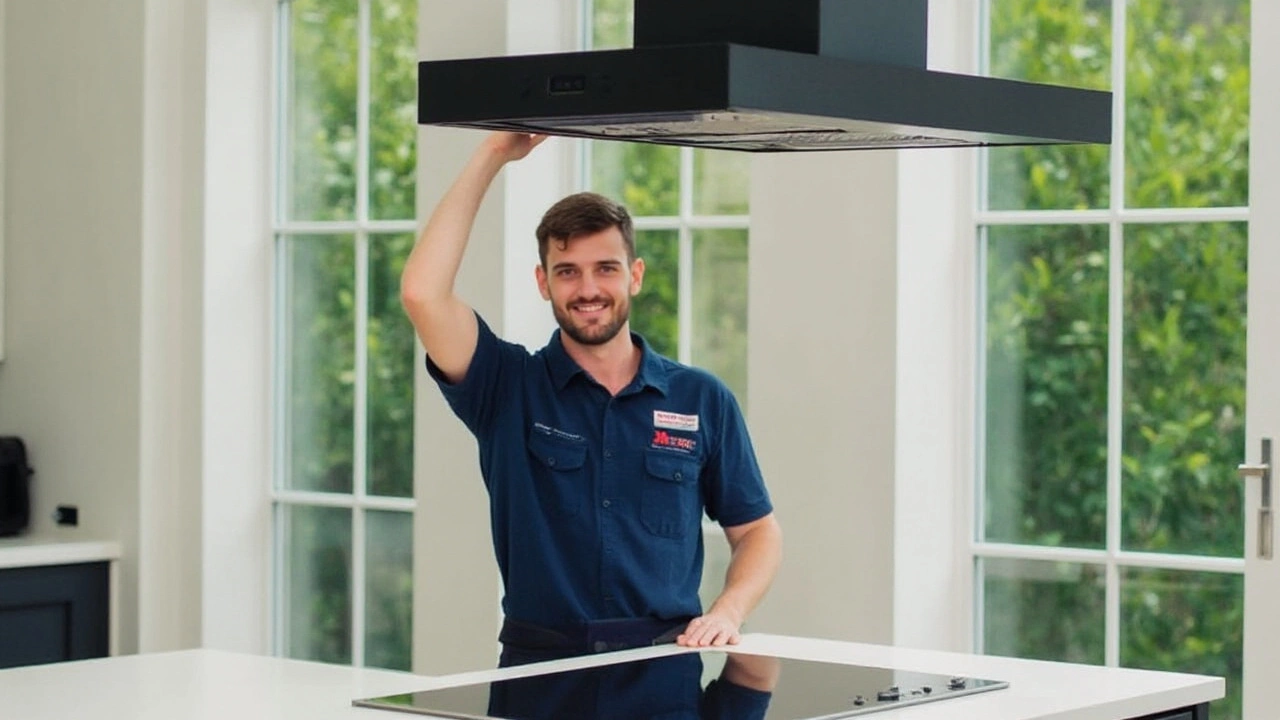
Tips for Regular Maintenance
Regular upkeep of your kitchen extractor fan is essential to ensure it runs smoothly and efficiently, extending its lifespan and saving you from costly repairs in the future. To begin with, regular cleaning is key. The ventilation system in most kitchen extractor fans collects a significant amount of grease and dust over time. Make it a point to wipe down the fan and its casing with a damp cloth and mild detergent every month. This simple act can prevent a lot of potential issues caused by buildup.
Moreover, cleaning or replacing the filter is another crucial aspect of maintaining your kitchen fan. Depending on the model, you might have metal filters, which can be washed, or carbon filters, which need replacement. Check the manufacturer’s guidelines for specific instructions on cleaning and replacing filters. Carbon filters typically last three to six months depending on usage, whereas metal filters should be cleaned monthly.
Next, examine the fan blades and the motor for any signs of wear and tear. Sometimes, unusual noises from the extractor fan could be a result of loose fan blades. If you notice anything amiss, tighten any loose screws or components. Greasing the motor is often neglected, but it’s a good practice to lightly oil the motor bearings every six months, especially if the fan seems to be running slower than usual.
Routine inspection of the ductwork is also advised. Any obstructions in the duct could restrict airflow and strain the fan motor, leading to reduced efficiency or motor burnout. Check for any blockages, such as nests or debris, especially if your ventilation exits to the outdoors. Ensuring clear and open ducts will not only improve performance but also reduce the chances of unpleasant odors lingering in your kitchen.
Lastly, test the fan’s suction power periodically. Place a tissue near the fan when it is turned on; it should stick to the surface if the extraction is strong enough. Should the suction be lacking, it might be a sign that your fan needs professional servicing. Remember, while some maintenance tasks are simple enough to handle on your own, don’t hesitate to call in a professional if you encounter issues beyond basic troubleshooting.
According to a quote from the Home Ventilation Institute,
"Regular maintenance of your home’s ventilation systems, including kitchen extractor fans, can drastically improve indoor air quality and enhance energy efficiency."This highlights the importance of not neglecting such routine care, as it significantly impacts your home environment.



